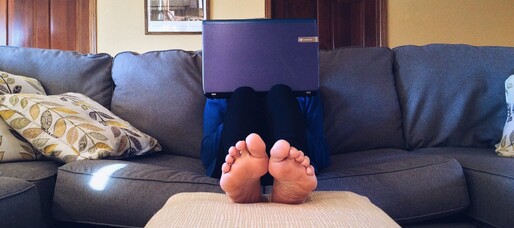An increasing number of employees work exclusively or part-time from their home – but home is where most accidents happen. Employers still retain some duty of care responsibility for their home-based employees so it becomes an essential part of any at-home work agreement to factor in a safe workspace that minimises the chances of accident and compensation claims.
In general, while the expectation is that an employee should be exposed to no more risk than they would be in the office or workshop, in reality an employer has little control over the home situation. Nor is it entirely clear just exactly how occupational safety and health or compensation laws cover this subject.
Employers need to take action to protect themselves from litigation arising from home-based accidents but just how are they to ascertain the real risk situation prevailing in the home such as the presence of young children or pets, unsafe electrical outlets and equipment, poor ergonomics, ineffective lighting, lack of security and any number of other potential hazards that could be present? Inspections would be valuable but they present privacy issues because of their invasive nature and legal issues because an employee’s home is private property and employers may only visit the premises with an employee’s permission.
Presently the most effective course of action is to clearly set out your expectations with regard to the safety standards you expect to operate in your employee’s workspace in a contract. Since actual inspection to check that they have upheld their part of the agreement may be impractical, some alternative arrangement must be agreed to. Checklists or photos of their work area could be required to demonstrate that equipment is suitable and in good repair, that they have been child and pet proofed, that smoke alarms and extinguishers have been fitted and so on.
The checklist approach can benefit the home worker as well. If they have customers, suppliers, or other employees of the firm visiting their home workplace all reasonable steps should be taken to make sure their visits are safe ones. Because home-based workers are familiar with their residence they may simply be negotiating various hazards without ever noticing them. Visitors may not be so lucky. Having them perform a check against a set list can highlight any dangers that need correcting. Home workers should, whenever it is feasible, be required to attend workplace safety training to keep them up to date and their skills as well honed as those of employees who work on company premises. Finally, ensure that you carry liability coverage in case there is an incident. Have the proposed worksite checked by your employee’s insurance agent to assess what extra cost is involved in protecting them.
Employers need to take a more considered approach to allowing home-based work arrangements in the first instance. Permission to work from home should be predicated on a cost/benefit assessment to establish just what is in it for your business. If approval is granted then the arrangement needs to be formalised in a company work-at-home policy that includes specific safety requirement guidelines. A home safety self certification checklist must form part of the work-at-home policy along with some mutually acceptable way of checking compliance.
Combine the facts that the number of employees working from home is increasing, that the home is a prime location for accidents, and that there is a lack of clearly delineated responsibility between employer and employee for safety in the home/work area, and the result is a very uncertain situation for employers. The answer to providing protection to both you and your home-based workers must involve imposing (justifiable) controls while also encouraging employees to accept that they too carry a degree of personal responsibility when working from home.



